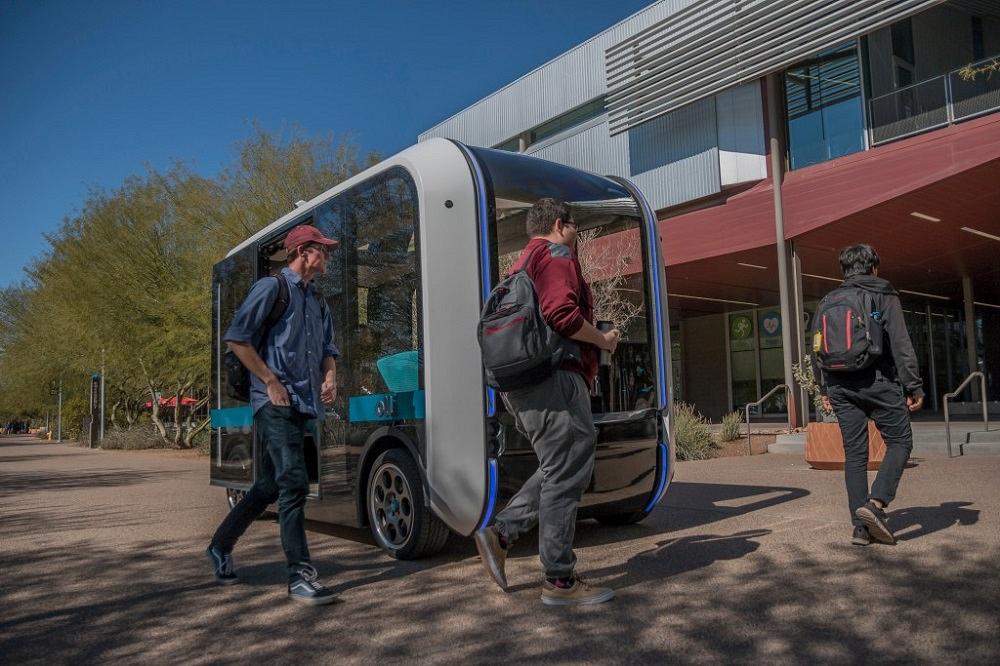- FMA
- The Fabricator
- FABTECH
- Canadian Metalworking
Our Publications
Categories
- Additive Manufacturing
- Aluminum Welding
- Arc Welding
- Assembly and Joining
- Automation and Robotics
- Bending and Forming
- Consumables
- Cutting and Weld Prep
- Electric Vehicles
- En Español
- Finishing
- Hydroforming
- Laser Cutting
- Laser Welding
- Machining
- Manufacturing Software
- Materials Handling
- Metals/Materials
- Oxyfuel Cutting
- Plasma Cutting
- Power Tools
- Punching and Other Holemaking
- Roll Forming
- Safety
- Sawing
- Shearing
- Shop Management
- Testing and Measuring
- Tube and Pipe Fabrication
- Tube and Pipe Production
- Waterjet Cutting
Industry Directory
Webcasts
Podcasts
FAB 40
Advertise
Subscribe
Account Login
Search
Vehicle from Local Motors is 80% 3D-printed
In an interview with the website Ride, the president of Local Motors talks about the company’s autonomous vehicle
- January 17, 2020
- Article
- Additive Manufacturing

Local Motors President Vikrant Aggarwal says the Olli shuttle represents the evolution of the company’s 3D-printed vehicle technology. Image provided by Local Motors
Following is an excerpt from an interview with the president of Local Motors, Vikrant Aggarwal, about one of the company’s 3D-printed vehicles. The interview was posted to Ride, a website powered by Kelley Blue Book that’s devoted to transportation technology.
As a leading pioneer in the space of 3D-printed, autonomous vehicles, Local Motors is poised to help transform the business model for electric vehicles while helping to drive the wider adoption of the technology. Since its inception, Local Motors has debuted three “firsts”: the world’s first co-created vehicle; the world’s first 3D-printed car; and Olli, the world’s first co-created, self-driving electric vehicle.
During a recent Q&A with Ride, Vikrant Aggarwal discussed some of the benefits of its 3D-printed Olli.
Ride: How does Local Motors’ 3D printing technology help to address some of the challenges associated with electric vehicle production?
Aggarwal: I would use the word opportunity. I think the opportunity is more different whether you’re 3D printing an electric vehicle or a nonelectric vehicle. It’s much more economically energy efficient. It’s (also) easier to make changes to the product.
Ride: The Olli started as a vehicle which was about 30% 3D-printed. The vehicle is now 80% 3D-printed. What has Local Motors learned during that evolution?
Aggarwal: The key thing is that process control is extremely important, because you are dealing with a huge printer. So, how you control the parameters, how you manage them, (and) how you do quality control is extremely important, from an operations standpoint.
If you look at traditional automotive models, it’s a five- to seven-year process to go from one model to the other, and hundreds of millions of dollars of investments. But from a 3D printing perspective, we went from the older version of Olli to the newer version in one year.
Ride: Clearly, safety remains a primary concern when discussing any kind of autonomous vehicle technology. As a company centered around 3D-printed vehicles in the autonomous space, how is Local Motors working to ease those concerns?
Aggarwal: We’ve completed hundreds of thousands of rides across the globe. Once you sit in those shuttles, ride them, the experience you get speaks for itself. The second is you rely on test data … that shows how it is safe. The third is you go through technical discussions with people to give them a sense of the safety of the shuttles. You can demonstrate that it is a safe and reliable product.

Local Motors operates two microfactories—one in Knoxville, Tenn., and the other in Chandler, Ariz. Image provided by Local Motors
Ride: Are there any limitations to 3D-printed electric vehicles, when compared to other 3D vehicles? If so, what are they? And what is Local Motors doing to be able to push the technology beyond those limitations?
Aggarwal: I think one of the biggest is the evolution of the technology, how it develops and how it can be deployed in a much broader network. Let’s say that someone wants to make a 50-passenger shuttle; how would we use 3D printing? I don’t think they are limitations. I think they are learning, learning the technology as it evolves and learning how you deploy that technology in different sizes and segments of the applications.
As an example, I suspect that three years ago, if someone said, “We’re going to 3D-print a shuttle like Olli,” which carries eight people, some people would have said, “No way.” That’s the progressive attitude we’ve taken.
The entire interview can be found at the Ride website.
About the Publication
- Podcasting
- Podcast:
- The Fabricator Podcast
- Published:
- 04/16/2024
- Running Time:
- 63:29
In this episode of The Fabricator Podcast, Caleb Chamberlain, co-founder and CEO of OSH Cut, discusses his company’s...
- Trending Articles
- Industry Events
16th Annual Safety Conference
- April 30 - May 1, 2024
- Elgin,
Pipe and Tube Conference
- May 21 - 22, 2024
- Omaha, NE
World-Class Roll Forming Workshop
- June 5 - 6, 2024
- Louisville, KY
Advanced Laser Application Workshop
- June 25 - 27, 2024
- Novi, MI


























